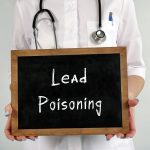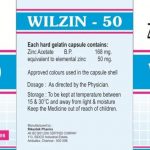Lead Poisoning Antidote

Lead poisoning, a silent menace that has plagued humanity for centuries, has left a trail of devastation in its wake. However, in the fight against this insidious threat, there is hope. Today, we will delve into the fascinating world of lead poisoning antidotes, focusing on one remarkable substance that has saved countless lives.
While there is no magic pill to instantly reverse the effects of lead poisoning, there is a crucial antidote known as “Chelation Therapy.”
The Looming Threat of Lead Poisoning
Lead poisoning is a severe health issue that arises from the accumulation of lead in the body. It occurs when lead-containing substances are ingested, inhaled, or absorbed through the skin. Sources of lead exposure can include lead-based paints, contaminated water, and industrial pollutants. Lead is particularly toxic and dangerous for young children and pregnant women, as it can cause irreversible damage to the nervous system and lead to developmental issues.
Signs of Lead Poisoning
Here are some common signs and symptoms of lead poisoning:
1. Neurological Symptoms:
• Headaches: Frequent or persistent headaches are a common early sign of lead poisoning.
• Behavioral Changes: Lead exposure can lead to irritability, mood swings, and behavioral issues, particularly in children.
• Difficulty Concentrating: Lead poisoning may impair cognitive function and the ability to concentrate.
2. Gastrointestinal Symptoms:
• Abdominal Pain: Lead poisoning can cause abdominal discomfort and cramping.
• Nausea and Vomiting: Affected individuals may experience nausea and vomiting.
3. Fatigue and Weakness:
• Chronic fatigue and weakness are often associated with lead poisoning.
4. Muscle and Joint Pain:
• Muscle and joint pain can occur as a result of lead exposure.
5. Anemia:
• Lead poisoning can lead to a decrease in red blood cells, causing anemia. Symptoms of anemia may include fatigue, pale skin, and shortness of breath.
6. Cognitive and Developmental Issues (Children):
• In children, lead poisoning can impair cognitive development, leading to learning difficulties, developmental delays, and reduced IQ.
7. Hearing and Speech Problems (Children):
• Lead exposure can affect a child’s ability to hear and speak.
8. Kidney Damage:
• Severe lead poisoning can damage the kidneys, leading to symptoms like high blood pressure, changes in urine output, and kidney dysfunction.
9. Constipation:
• Lead poisoning may cause constipation in both children and adults.
10. Hypertension:
• Elevated blood pressure (hypertension) can be a result of lead exposure.
11. Reproductive Issues:
• Lead poisoning can affect reproductive health in both men and women, leading to fertility problems.
12. Pica (Children):
• Children with lead poisoning may exhibit pica, a condition in which they crave and eat non-food items like dirt, paint chips, or lead-contaminated objects.
It’s essential to note that the symptoms of lead poisoning can be subtle and often resemble those of other medical conditions. If you suspect lead exposure or experience any of these symptoms, especially in children or individuals at higher risk (e.g., those living in older homes with lead-based paint), it’s crucial to seek medical attention promptly. A blood test is the most reliable way to confirm lead poisoning, and early diagnosis and intervention are key to preventing long-term health issues. Additionally, addressing the source of lead exposure, such as lead-contaminated water or paint, is essential to prevent further exposure.
The Need for an Antidote
When lead enters the body, it disrupts essential biochemical processes and can cause a range of health problems. The symptoms of lead poisoning can be subtle, making it difficult to diagnose without proper testing. Consequently, the need for an antidote to mitigate lead’s toxic effects is of paramount importance.
Chelation Therapy: The Savior
Chelation therapy is the primary antidote for lead poisoning, and it has been a game-changer in the medical field. This treatment involves the administration of chelating agents that bind to the lead ions in the body, forming complexes that are excreted through urine. The word “chelation” is derived from the Greek word “chele,” which means “claw” or “pincer.” Chelating agents act like molecular claws, grabbing onto toxic metals like lead and facilitating their removal from the body.
EDTA: The Chelating Champion
One of the most commonly used chelating agents in lead poisoning treatment is ethylenediaminetetraacetic acid, or EDTA. EDTA is a synthetic amino acid that has an exceptional affinity for heavy metals, including lead. When administered under the supervision of a healthcare professional, EDTA can help reduce the lead burden in the body.
Chelation therapy is typically administered intravenously, allowing the chelating agent to circulate throughout the bloodstream and remove lead from various tissues. Multiple treatment sessions may be necessary, depending on the severity of lead poisoning.
Here are the dosing recommendations for chelation therapy with EDTA and dimercaprol in the treatment of lead poisoning in both adult and pediatric patients:
| Patient Category | Lead Level Range | Dosage (EDTA) | Dosage Frequency |
| Adults | 20mcg/dl – 70mcg/dl | 1000 mg/m^2 daily | IV or IM |
| >70mcg/dl | EDTA combined with dimercaprol | EDTA before dimercaprol | |
| Lead Nephropathy | Based on creatinine levels: | ||
| – Creatinine 2-3 mg/dl: 500 mg/m^2 every 24 hours for 5 days | |||
| – Creatinine 3-4 mg/dl: 500 mg/m^2 every 48 hours for 3 doses | |||
| – Creatinine >4 mg/dl: 500 mg/m^2 weekly | |||
| Pediatric | 45mcg/dl – 70mcg/dl | 25 mg/kg/day for 5 days | |
| >70mcg/dl | 50 mg/kg/day in six doses | IV (Avoid IV in cases of cerebral edema; use IM) |
These dosing recommendations are important guidelines for healthcare professionals when considering chelation therapy for patients with lead poisoning. The decision to initiate chelation therapy should be made in consultation with a medical expert and is based on the patient’s lead levels and clinical symptoms, as well as the potential risks and benefits associated with the treatment.
Benefits of Chelation Therapy For Lead Poisoning
Chelation therapy offers numerous benefits in the treatment of lead poisoning. Some of these advantages include:
1. Lead Removal: The primary goal of chelation therapy is to remove lead from the body, reducing its toxic effects.
2. Symptom Improvement: As lead levels decrease, patients often experience a reduction in lead poisoning symptoms, which can range from abdominal pain to cognitive deficits.
3. Prevention of Long-Term Damage: Chelation therapy can help prevent or mitigate the long-term effects of lead poisoning, especially in children.
4. Enhanced Quality of Life: Successfully treating lead poisoning can significantly improve a patient’s quality of life by addressing symptoms and preventing further damage.
Conclusion
The battle against lead poisoning has a formidable ally in chelation therapy, with EDTA as the star player. This remarkable antidote offers hope to those who have fallen victim to lead’s toxic embrace, providing a means to reduce its harmful effects and improve the quality of life for affected individuals.
While chelation therapy is a powerful tool, it is essential that it be administered by qualified healthcare professionals who can carefully monitor and adjust the treatment to suit the needs of each patient. As research into lead poisoning and its treatment continues, the antidotes and therapies available to counteract its effects will undoubtedly become even more effective and refined, further protecting the health and well-being of individuals at risk





